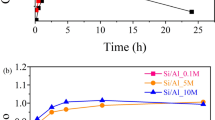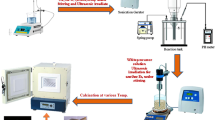Summary
Tiny particles were found in the medium in the presence of the human leukemia cell line Kasumi-6. The particles were separated from human cells by filtration and incubated in RPMI1640 supplemented with 10% fetal calf serum at 37 C. The particles increased in number very slowly in the liquid medium but did not reveal any biological activity. Transmission electron microscopy of the particles showed a spheroid or ovoid shape in ultrathin section. No specific polypeptides from the purified particles were detected by sodium dodecyl sulfate-polyacrylamide gel electrophoresis (SDS-PAGE), except for bovine fetuin that adsorbed to the surface of the particles. X-ray diffractometry as well as Fourier transform infrared spectrometry suggested the particles consisted of hydroxyapatite. The mechanism of self-propagation of the hydroxyapatite particles in liquid medium is currently unknown. This type of particle has been overlooked for a long period because it is noncultivable. It will be necessary to examine its biological effects to the cultured cells.
Similar content being viewed by others
References
Asou, H.; Combart, A. F.; Takeuchi, S.; Tanaka, H.; Tanioka, M.; Matsui, H.; Kimura, A.; Inaba, T.; Koeffler, H. P. Establishment of acute myeloid leukemia cell line Kasumi-6 from a patient with a dominant-negative mutation in the DNA-binding region of C/EBPα gene. Genes Chromosomes Cancer 36:167–174; 2003.
Chen, T. R. In situ demonstration of mycoplasma contamination in cell cultures by fluorescent Hoechst 33258 stain. Exp. Cell Res. 104:255–262; 1977.
Cisar, J. O.; Xu, D.-Q.; Thompson, J.; Swaim, W.; Hu, L.; Kopecko, D. J. An alternative explanation of nanobacteria-induced biomineralization. Proc. Natl. Acad. Sci. USA 97:11511–11515; 2000.
Folk, R. L. SEM imaging of bacteria and nanobacteria in carbonate sediments and rocks. J. Sediment. Petrol. 63:990–999; 1993.
Harasawa, R. PCR: application of nested PCR to detection of mycoplasmas. In: Razin, S.; Tully, J. G. ed. Molecular and diagnostic procedures in mycoplasmology, vol 2. New York: Academic Press; 1996:75–79.
Kajander, E. O.; Cifticioglu, N. Nanobacteria: an alternative mechanism for pathogenic intra- and extracellular calcification and stone formation. Proc. Natl. Acad. Sci. USA 95:8274–8279; 1998.
Ogata, M.; Koshimizu, K. Isolation of mycoplasmas from tissue cell lines and transplantable tumor cells. Jpn. J. Microbiol. 11:289–303; 1967.
Price, P. A.; Williamson, M. K.; Nguyen, T. M. T.; Than, T. N. Serum levels of the fetuin-mineral complex correlate with artery calcification in the rat. J. Biol. Chem. 279:1594–1600; 2004.
Author information
Authors and Affiliations
Corresponding author
Rights and permissions
About this article
Cite this article
Harasawa, R., Tanabe, H., Kurematsu, M. et al. Self-propagating calciferous particles detected in a human cell line Kasumi-6 (JCRB 1024). In Vitro Cell.Dev.Biol.-Animal 42, 13–15 (2006). https://doi.org/10.1007/s11626-006-0005-y
Received:
Accepted:
Issue Date:
DOI: https://doi.org/10.1007/s11626-006-0005-y




